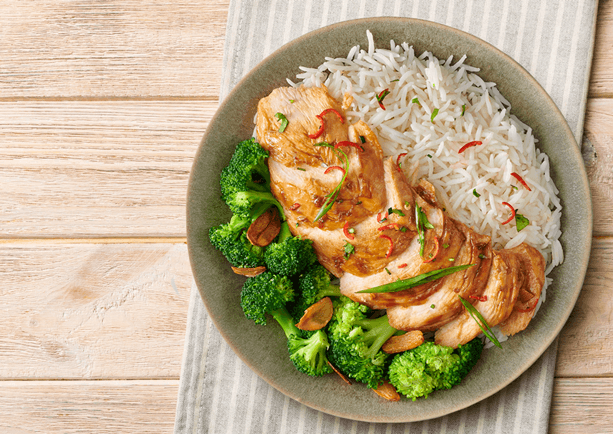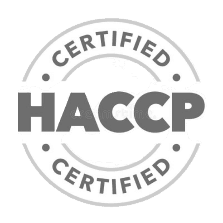20-Day Healing Autoimmune Paleo Diet Meal Plan

Managing and healing autoimmune diseases begins with a journey, and one essential part of this journey is the right diet. The autoimmune paleo diet meal plan will include meals focusing on individuals suffering from autoimmune diseases and trying to lower inflammation to support the immune system.
Here is the list of meals that should be taken for the next 20 days: This type of dieting is a structured but somewhat liberal diet based on foods with healing properties. This plan is designed to strip out the major dietary offenders and replace them with foods that are good for the gut and decrease inflammation so you can achieve health more effectively.
If you are facing an autoimmune disease or trying to nourish your body for better health, this meal plan will give you one-stop shopping to improve your nutritional balance.
What is the Autoimmune Paleo Diet?
The autoimmune paleo diet is a specialised version of the paleo diet designed to help manage autoimmune diseases. It focuses on eliminating foods that can trigger inflammation and immune responses, such as grains, legumes, dairy, and processed foods. Instead, it emphasises nutrient-dense foods like vegetables, fruits, high-quality meats, and healthy fats. The goal is to reduce inflammation, support gut health, and improve overall immune function.
What are the Benefits of the Autoimmune Paleo Diet?
Adopting an autoimmune paleo diet meal plan can offer numerous benefits for individuals with autoimmune diseases. By removing common dietary triggers, this diet helps to reduce chronic inflammation, which is often a significant factor in autoimmune conditions.
By following this diet, many people have experienced improvements in symptoms, increased energy levels, and better overall health. Success stories and testimonials from those who have adopted the autoimmune paleo diet highlight its potential to manage and even alleviate symptoms of autoimmune diseases.
What are the Essential Foods for Healing Autoimmune?
The autoimmune paleo diet includes a variety of foods known for their healing properties. Key components of this diet are:
- Vegetables and Fruits: Rich in vitamins, minerals, and antioxidants, they help reduce inflammation and support overall health.
- High-Quality Meats: Grass-fed beef, free-range chicken, and wild-caught fish provide essential proteins and healthy fats.
- Healthy Fats: Avocado, olive oil, and coconut oil support immune function and provide energy.
- Healing Herbs and Spices: Turmeric, ginger, and garlic have anti-inflammatory and immune-boosting properties.
The autoimmune paleo diet aims to nourish the body and support the healing process by focusing on these foods.
What are the Foods to Avoid?
For those following an autoimmune paleo diet meal plan, avoiding certain foods that can trigger autoimmune responses and inflammation is crucial. These include:
- Grains and Legumes: Wheat, barley, oats, beans, and lentils can cause gut irritation and inflammation.
- Dairy: Milk, cheese, and other dairy products are common allergens that can exacerbate autoimmune symptoms.
- Processed Foods: Packaged snacks, fast food, and anything with artificial ingredients should be eliminated.
- Nightshades: Tomatoes, potatoes, eggplants, and peppers can be problematic for some individuals with autoimmune conditions.
Avoiding these foods helps to create an environment where the body can heal and recover more effectively.
Supplementation and Hydration
In addition to dietary changes, proper supplementation and hydration are vital for those on an autoimmune paleo diet. Supplements like omega-3 fatty acids, probiotics, and vitamin D can support immune health and reduce inflammation. Staying hydrated with plenty of water and herbal teas is also essential, as it aids digestion and helps to flush out toxins.
Week-by-Week Meal Plan Breakdown
Week 1: Detox and Reset
Focus on Anti-Inflammatory Foods
Emphasis on soups, stews, and easily digestible foods to give the digestive system a break and reduce inflammation.
- Breakfast: Sweet potato hash with spinach and eggs
- Lunch: Grilled chicken salad with mixed greens and avocado
- Dinner: Baked salmon with roasted vegetables
- Snacks: Carrot sticks with guacamole, apple slices with almond butter
Week 2: Reintroducing Variety
Adding More Complex Recipes
Gradually expand the diet with different types of meat, fish, and a wider variety of vegetables to keep meals interesting and nutrient-dense.
- Breakfast: Green smoothie with avocado, spinach, and coconut milk
- Lunch: Zucchini noodles with pesto and shrimp
- Dinner: Herb-roasted chicken with sweet potato and broccoli
- Snacks: Mixed berries with coconut cream, cucumber slices with tahini
Week 3: Building Strength
Nutrient-Dense and Energy-Boosting Foods
Focus on including high-quality proteins like chicken, beef, fish, healthy fats, and various colourful vegetables to support muscle growth and overall strength.
- Breakfast: Paleo pancakes with coconut flour and blueberries
- Lunch: Beef and vegetable stir-fry with cauliflower rice
- Dinner: Lamb chops with roasted root vegetables
- Snacks: Kale chips with nutritional yeast, homemade energy balls with dates and nuts
Sample Menus and Recipes
Breakfast Ideas
- Sweet Potato Hash with Spinach and Eggs
- A hearty and nutrient-dense start to your day, packed with vitamins and healthy fats.
- Green Smoothie with Avocado and Coconut Milk
- A refreshing and anti-inflammatory drink to boost your morning energy.
Lunch Options
- Grilled Chicken Salad with Mixed Greens and Olive Oil Dressing
- A light yet filling meal that provides essential proteins and healthy fats.
- Zucchini Noodles with Pesto and Shrimp
- A grain-free alternative that’s both delicious and nutritious.
Dinner Recipes
- Baked Salmon with Roasted Vegetables
- Rich in omega-3 fatty acids, this dish supports heart and brain health.
- Beef and Vegetable Stew
- A comforting and wholesome meal that’s easy to digest and packed with nutrients.
Snack Suggestions
- Carrot Sticks with Guacamole
- A crunchy and satisfying snack that’s full of healthy fats.
- Apple Slices with Almond Butter
- A sweet and protein-rich option to keep you energised between meals.
Tips for Success
- Set Realistic Goals: Establish achievable milestones to keep yourself motivated.
- Track Progress: Keep a food diary or use an app to monitor your meals and symptoms.
- Celebrate Milestones: Reward yourself for sticking to the plan and achieving your goals.
- Dealing with Cravings: Find healthy alternatives without deviating from the diet.
- Social Situations: Plan for dining out or attending events by checking menus in advance or bringing compliant dishes.
- Adjusting the Plan: Be flexible and make necessary adjustments to suit your needs and preferences.
Conclusion
The 20-day autoimmune paleo diet meal plan is designed to help you manage autoimmune diseases by reducing inflammation and supporting overall health. Focusing on nutrient-dense foods and eliminating common dietary triggers can improve your quality of life and regain control over your health. This plan provides a structured approach to eating, with detailed weekly breakdowns, sample menus, and practical tips for success. Embrace this journey to better health, and enjoy the healing and nourishing power of the autoimmune paleo diet.
If you’re new to Delicut, now is the perfect time to experience our gourmet meal plans with a special offer just for you! Sign up today and enjoy 15% off your first order. Our service is designed to save you time while delivering fresh, customisable, and affordable meals to your doorstep. Each meal is crafted daily with high-quality ingredients and offers a variety of protein options to suit your dietary needs. Don't miss out on this limited-time opportunity to simplify your meal planning and savour the convenience of Delicut.
FAQs
1. Can the AIP diet help with all autoimmune diseases?
The Autoimmune Paleo (AIP) diet can help manage symptoms of many autoimmune diseases by reducing inflammation and supporting gut health. However, individual responses may vary, and it's important to consult a healthcare provider before starting the diet. The AIP diet is not a cure but can be a beneficial part of a comprehensive treatment plan.
2. How long should one follow the AIP diet to see results?
Most people start to see improvements within 30 to 90 days of following the AIP diet. The timeframe can vary depending on the individual's condition and adherence to the diet. Consistency is key to the best results.
3. Are there any risks or side effects of following the AIP diet?
Some individuals may experience initial side effects such as fatigue or digestive changes as their bodies adjust to the new diet. If the diet is not well-balanced, nutritional deficiencies can occur. Working with a healthcare provider is important to ensure the diet meets all nutritional needs.
4. What are some typical meals included in an AIP meal plan?
Typical AIP meals include sweet potato hash with spinach and eggs, grilled chicken salad with mixed greens, and baked salmon with roasted vegetables. Snacks might include carrot sticks with guacamole and apple slices with almond butter. Meals focus on nutrient-dense, anti-inflammatory foods.
5. Can I eat fruits on the AIP diet? If so, which ones?
Yes, fruits are allowed on the AIP diet, but it's best to choose lower-sugar options and consume them in moderation. Berries, apples, and pears are great choices. Avoid citrus fruits initially, as they can be potential triggers for some people.
Trending Searches:
Meal Plan Dubai | Affordable Meal Plans Abu Dhabi | Meal Plan Ajman | Meal Plan Al In | Meal Plan Sharjah | Meal Plan Subscription
Related Blogs
Why do most people in the UAE get their calories wrong
Dec 8, 2025 | 6DASH Diet Meal Plan
Nov 11, 2025 | 8Fatty Liver Meal Plan
Oct 31, 2025 | 8Pregnancy Diet Meal Plan
Oct 27, 2025 | 82000 Calorie Meal Plan
Oct 1, 2025 | 8Intermittent Fasting Diet Plan
Sep 5, 2025 | 81000 Calorie Meal Plan
Sep 5, 2025 | 8High-Protein Meal Plans
Sep 5, 2025 | 8How to Choose the Right Meal Plan for Your Fitness Goals
Sep 5, 2025 | 8The GM diet plan: Is it possible to shed fat in just 7 days?
Sep 5, 2025 | 8






